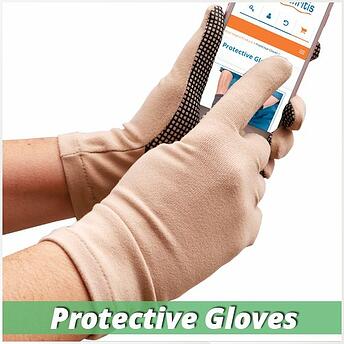Unless you have been diagnosed with Scleroderma, or know someone who has, you may have never heard of this condition. Bob Saget, America’s TV Dad Danny Tanner, passed away on Jan 9 but you might not know that he was a Scleroderma Research Foundation board member. His sister, Gay, had Scleroderma and Bob Saget was committed to ‘finding a cure’ so that no one else would go through what his sister did. Although Scleroderma means “hard skin”, hardening of the skin is just the most visible symptom of this incurable autoimmune disease. So what is Scleroderma and what are the symptoms?
What Is Scleroderma?
Affecting over 300,000 Americans, scleroderma is considered to be an autoimmune disease, caused by the overproduction of collagen, the connective tissue that acts as the framework for holding your body together. Scleroderma can develop in every age group, but it most frequently occurs between the ages of 25 to 55.
There are two types of scleroderma: localized and systemic. Localized scleroderma is milder as it affects only a few places in the body. In systemic scleroderma, the connective tissue hardens in more places throughout the body—and can potentially affect the lungs, kidneys, joints, muscles, and internal organs as well as the skin.
The symptoms of scleroderma can be different for each person, and the effects can range from very mild to severe. In some cases it may cause nothing more than hardening of the skin and in others it may cause stiffening of the joints, digestive issues, scarring of the lungs, and kidney problems.
What are the Symptoms?
There are two things to keep in mind about Scleroderma. One- each case of Scleroderma is different, and should be discussed with your health care provider. Two– this rare disorder is often misdiagnosed because its symptoms can mimic those of many other autoimmune diseases. With that said, although symptoms vary greatly from person to person, the most noticeable sign of the disease is loss of mobility in the hands. As the skin and joints stiffen, fingers can lock into place making it difficult to open and close the hands. Without mobile fingers, the ability to easily pick up items, hold a pen or silverware, and get dressed may be lost.
How Is Scleroderma Treated?
While scleroderma cannot be cured, there are things that can be done to help. Medications can be used to control symptoms and reduce inflammation. Wearing protective gloves that provide compression and warmth can help lessen swelling and relieve discomfort and pain to make everyday activities a little easier.
Scleroderma patients may also benefit from working with physical and occupational therapists, who can provide stretching and exercise programs to improve function and range of motion. Therapists can also suggest splints and adaptive devices that will help increase the ability to perform daily activities.
There are many exceptions to the rules in scleroderma, perhaps more so than in other diseases. Since each case is different, it’s very important for patients to discuss their symptoms and concerns with their own health care provider.
To learn more about scleroderma, visit the National Scleroderma Foundation website, www.scleroderma.org.
Like what you’ve read? Click here to subscribe to the blog!
Protective Gloves for Scleroderma
Click on the image below
Our blogs are educational in nature and are not intended as a substitute for medical advice. Because your condition is unique to you, it is recommended that you consult with your health care provider before attempting any medical or therapeutic treatments. We are always happy to answer questions about products mentioned in our blogs, however, we cannot provide a diagnosis or medical advice.


